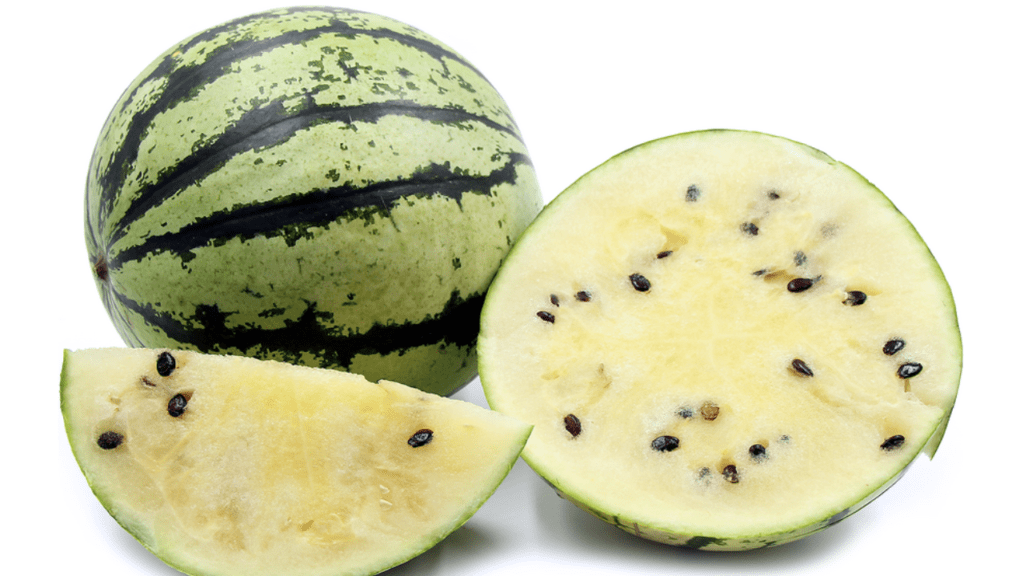
Why Is Your Watermelon White Inside? Causes and Solutions
Discovering a white interior when cutting into a watermelon can be surprising and disappointing for any fruit lover. If you’ve encountered a watermelon white inside, understanding the causes behind this phenomenon is crucial. In this comprehensive guide, we’ll explore why some watermelons have a white interior, potential reasons for this occurrence, and what you can do about it.
Table of Contents
ToggleWhat Causes Watermelon to Have White Inside?
Explanation of genetic factors influencing watermelon flesh color.
The color of a watermelon’s flesh is determined by genetic factors. There are different varieties of watermelon, and some of them have white or pale pink flesh, while others have the more common red or pink flesh. The white color of the flesh is due to the absence of lycopene, the pigment that gives watermelon its red color. This genetic variation in watermelons can lead to different flesh colors, and it is not necessarily an indication of the watermelon’s ripeness or quality.
Some watermelon varieties are intentionally bred to have white or pale pink flesh, while others may have this color due to environmental factors or cross-pollination with other varieties. It’s important to note that a watermelon with white flesh can still be perfectly ripe and delicious to eat, so don’t let the color deter you from enjoying the fruit.
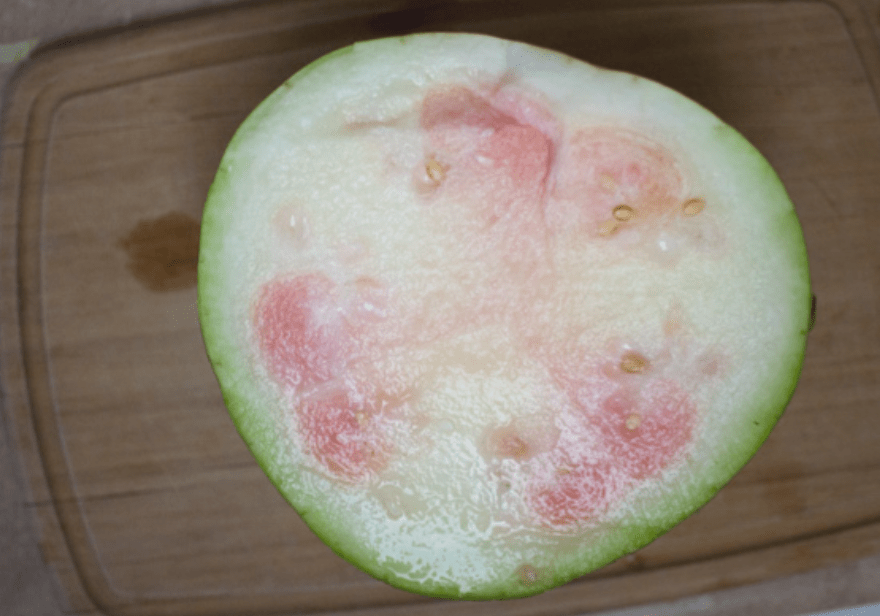
Role of specific genes and mutations in producing white-fleshed varieties.
The color of a watermelon’s flesh is determined by genetic factors. Genes and mutations play a role in producing white-fleshed varieties of watermelon. The absence of lycopene, the pigment that gives watermelon its red color, is responsible for the white color of the flesh. This genetic variation in watermelons can lead to different flesh colors, and it is not necessarily an indication of the watermelon’s ripeness or quality. Some watermelon varieties are intentionally bred to have white or pale pink flesh, while others may have this color due to environmental factors or cross-pollination with other varieties. It’s important to note that a watermelon with white flesh can still be perfectly ripe and delicious to eat, so don’t let the color deter you from enjoying the fruit. Understanding the role of specific genes and mutations in producing white-fleshed varieties can help in the cultivation and breeding of different watermelon varieties.
Environmental factors and growing conditions affecting flesh color.
The color of a watermelon’s flesh is determined by genetic factors. Genes and mutations play a role in producing white-fleshed varieties of watermelon. The absence of lycopene, the pigment that gives watermelon its red color, is responsible for the white color of the flesh. This genetic variation in watermelons can lead to different flesh colors, and it is not necessarily an indication of the watermelon’s ripeness or quality. Some watermelon varieties are intentionally bred to have white or pale pink flesh, while others may have this color due to environmental factors or cross-pollination with other varieties. It’s important to note that a watermelon with white flesh can still be perfectly ripe and delicious to eat, so don’t let the color deter you from enjoying the fruit. Understanding the role of specific genes and mutations in producing white-fleshed varieties can help in the cultivation and breeding of different watermelon varieties. Environmental factors and growing conditions can also affect the flesh color of watermelons, so it’s important for growers to consider these factors when cultivating the fruit.
Varieties of Watermelons with White Flesh
Description of popular white-fleshed watermelon varieties.
The white-fleshed watermelon varieties are a result of genetic variation and mutations that cause the absence of lycopene, the pigment responsible for the red color in traditional watermelons. Some varieties are intentionally bred to have white or pale pink flesh, while others may have this color due to environmental factors or cross-pollination with other varieties. It’s important to note that the color of the flesh does not necessarily indicate the ripeness or quality of the watermelon. Despite the different color, a watermelon with white flesh can still be perfectly ripe and delicious to eat. Understanding the role of specific genes and mutations in producing white-fleshed varieties can help in the cultivation and breeding of different watermelon varieties. Environmental factors and growing conditions can also affect the flesh color of watermelons, so it’s important for growers to consider these factors when cultivating the fruit. Some popular white-fleshed watermelon varieties include the Cream of Saskatchewan, the Moon and Stars, and the Mountain Sweet Yellow.
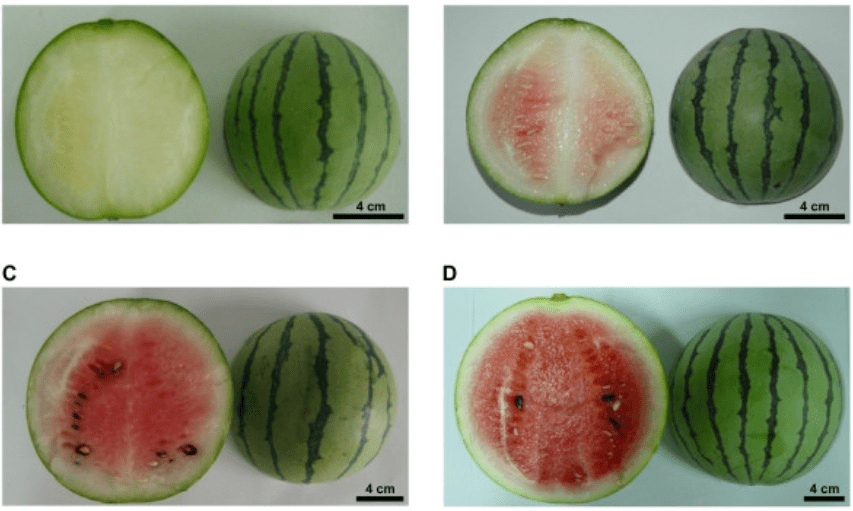
Differences in flavor, texture, and appearance compared to traditional red-fleshed types.
White-fleshed watermelon varieties are a result of genetic variation and mutations that cause the absence of lycopene, the pigment responsible for the red color in traditional watermelons. Some varieties are intentionally bred to have white or pale pink flesh, while others may have this color due to environmental factors or cross-pollination with other varieties. It’s important to note that the color of the flesh does not necessarily indicate the ripeness or quality of the watermelon. Despite the different color, a watermelon with white flesh can still be perfectly ripe and delicious to eat. Understanding the role of specific genes and mutations in producing white-fleshed varieties can help in the cultivation and breeding of different watermelon varieties. Environmental factors and growing conditions can also affect the flesh color of watermelons, so it’s important for growers to consider these factors when cultivating the fruit. Some popular white-fleshed watermelon varieties include the Cream of Saskatchewan, the Moon and Stars, and the Mountain Sweet Yellow. These varieties may have differences in flavor, texture, and appearance compared to traditional red-fleshed types, providing a unique and diverse option for watermelon enthusiasts.
Geographic regions where white-fleshed watermelons are commonly grown.
White-fleshed watermelons are commonly grown in regions with warm climates and ample sunlight, as these conditions are ideal for the growth and ripening of watermelons. Some geographic regions where white-fleshed watermelons are commonly grown include the southern United States, particularly in states like Georgia, Florida, and Texas. Other regions with similar climates, such as parts of Africa, Asia, and Australia, also cultivate white-fleshed watermelons. The availability of these varieties may vary based on local agricultural practices and consumer preferences, but these regions are known for their production of white-fleshed watermelons.
Nutritional Benefits of White-Fleshed Watermelons
White-fleshed watermelons offer a variety of nutritional benefits. They are a good source of vitamins A and C, which are important for maintaining healthy skin, vision, and a strong immune system. They also contain antioxidants such as lycopene, which has been linked to a reduced risk of certain chronic diseases. Additionally, white-fleshed watermelons are low in calories and high in water content, making them a hydrating and refreshing snack option. The unique flavor and texture of white-fleshed watermelons make them a delicious and nutritious addition to your diet.
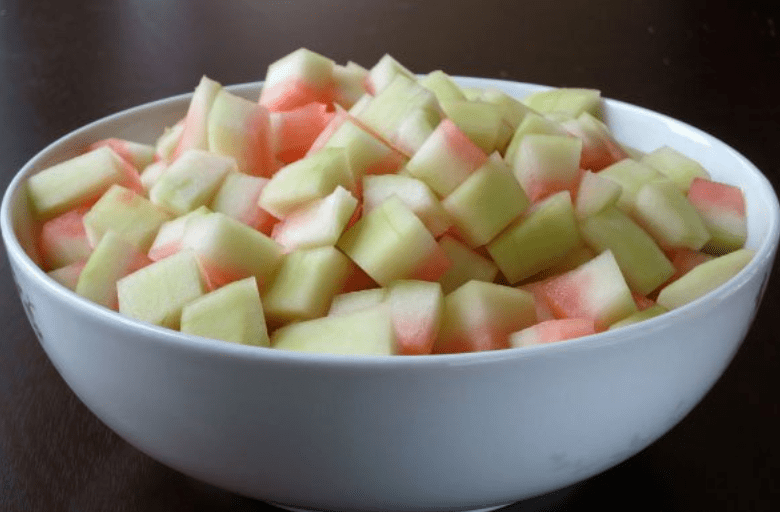
Culinary Uses and Recipes Featuring White-Fleshed Watermelons
White-fleshed watermelons are not as common as traditional red-fleshed watermelons, but they offer a unique and refreshing flavor that can be enjoyed in a variety of culinary dishes. In addition to being delicious to eat on their own, white-fleshed watermelons can be used in a variety of recipes, such as salads, smoothies, and sorbets.
One popular recipe featuring white-fleshed watermelons is a refreshing watermelon salad. Simply cube the watermelon and toss it with fresh mint, feta cheese, and a drizzle of balsamic glaze for a sweet and savory summer dish. Another option is to blend the white-fleshed watermelon with other fruits and a splash of lime juice to create a refreshing watermelon smoothie.
In addition to their culinary uses, white-fleshed watermelons also offer a range of nutritional benefits. They are a good source of vitamins A and C, as well as antioxidants like lycopene, which has been linked to a reduced risk of certain chronic diseases. They are also low in calories and high in water content, making them a hydrating and nutritious snack option.
Overall, white-fleshed watermelons are a versatile and tasty ingredient that can be enjoyed in a variety of culinary dishes. Whether you enjoy them on their own or incorporate them into recipes, these unique watermelons are a delicious and nutritious addition to any diet.
Consumer Preferences and Market Trends
are important factors to consider when it comes to the food industry. Understanding consumer preferences can help businesses tailor their products to meet the demands of the market. For example, white-fleshed watermelons have gained popularity due to their unique flavor and nutritional benefits. Market trends show that consumers are increasingly seeking out healthier and more diverse food options, making white-fleshed watermelons a desirable choice for many. In response to this trend, food manufacturers and retailers are incorporating white-fleshed watermelons into a variety of products, from smoothies to salads, to appeal to health-conscious consumers. By staying informed about consumer preferences and market trends, businesses can adapt their offerings to meet the changing needs of their customers and stay ahead in the competitive food industry.
Growing White-Fleshed Watermelons: Best Practices
for growing white-fleshed watermelons involve providing the right growing conditions and care for the plants. It’s important to start with high-quality seeds or seedlings from a reputable source. White-fleshed watermelons require warm soil to germinate and thrive, so it’s best to plant them in well-draining soil with full sun exposure. Adequate watering is crucial, especially during the hot summer months, to ensure the plants have enough moisture to develop healthy fruit. Mulching around the plants can help retain moisture and control weed growth. Additionally, regular fertilization with a balanced fertilizer can promote strong, healthy growth and fruit development. When the watermelons begin to mature, it’s important to provide support for the vines to prevent the fruit from resting directly on the ground. This can help reduce the risk of rot and pests. Finally, regular monitoring for signs of pests or diseases and prompt action to address any issues can help ensure a successful harvest of delicious white-fleshed watermelons. By following these best practices, growers can enjoy a bountiful crop of these unique and flavorful watermelons.
Harvesting and Storage Tips for White-Fleshed Watermelons
White-fleshed watermelons require adequate watering, especially during the hot summer months, to ensure the plants have enough moisture to develop healthy fruit. Mulching around the plants can help retain moisture and control weed growth. Additionally, regular fertilization with a balanced fertilizer can promote strong, healthy growth and fruit development. When the watermelons begin to mature, it’s important to provide support for the vines to prevent the fruit from resting directly on the ground. This can help reduce the risk of rot and pests. Finally, regular monitoring for signs of pests or diseases and prompt action to address any issues can help ensure a successful harvest of delicious white-fleshed watermelons. By following these best practices, growers can enjoy a bountiful crop of these unique and flavorful watermelons.
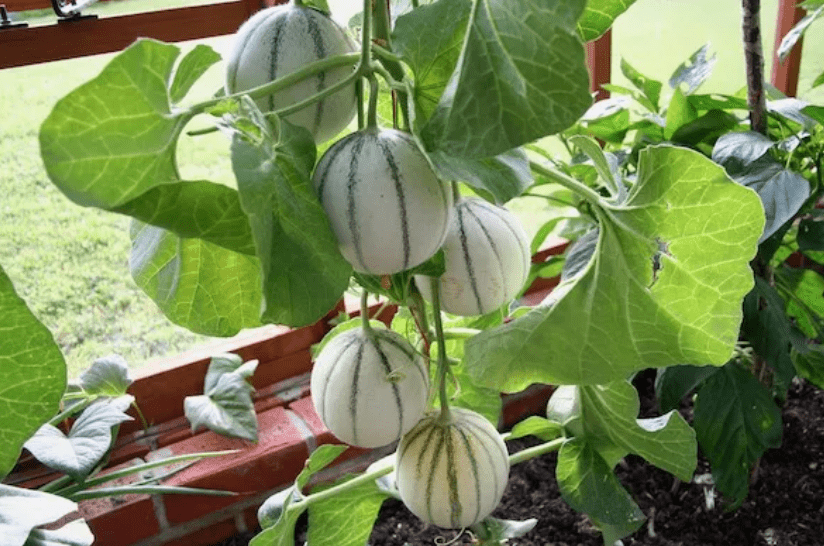
Common Issues and Troubleshooting
When it comes to harvesting and storing white-fleshed watermelons, there are a few important tips to keep in mind. Firstly, ensure that the plants receive adequate water, especially during the hot summer months, to support healthy fruit development. Mulching around the plants can help retain moisture and control weed growth. Additionally, regular fertilization with a balanced fertilizer can promote strong, healthy growth and fruit development. As the watermelons begin to mature, providing support for the vines can prevent the fruit from resting directly on the ground, reducing the risk of rot and pests. Finally, regular monitoring for signs of pests or diseases and taking prompt action to address any issues can help ensure a successful harvest. By following these best practices, growers can enjoy a bountiful crop of these unique and flavorful watermelons.
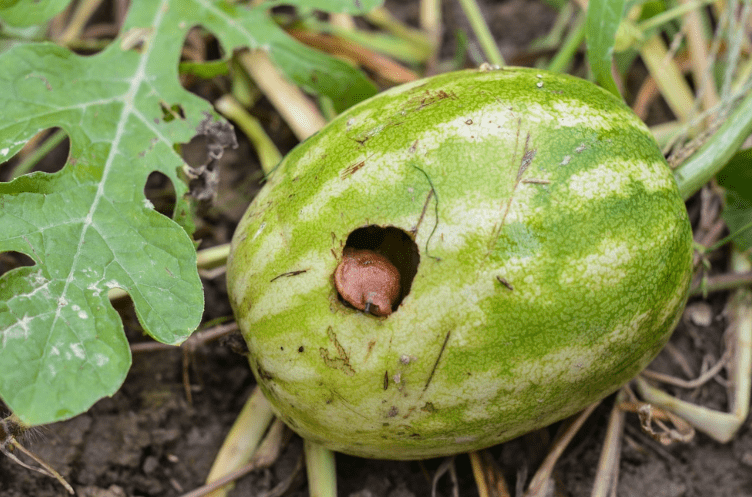
In conclusion, the color of a watermelon’s flesh can be affected by a variety of factors, including the variety of watermelon, the ripeness of the fruit, and environmental conditions. To ensure you enjoy a juicy, sweet watermelon with vibrant red flesh, it’s important to choose a ripe, fully matured watermelon from a reputable source. Keep in mind that certain varieties are known for their white or yellow flesh, so if you prefer the traditional red flesh, be sure to select the appropriate variety. By understanding the causes of white watermelon flesh and making informed choices, you can ensure that you always enjoy a delicious, ripe watermelon.
Frequently asked questions And Answer
There are a few reasons why a watermelon might be white inside. It could be due to under-ripeness, a lack of nutrients in the soil, or a specific variety of watermelon that naturally has a white interior.
To prevent a watermelon from being white inside, make sure to choose a ripe and mature watermelon when purchasing. Look for a creamy yellow spot on the bottom of the watermelon, which indicates ripeness. Additionally, ensure that the soil where the watermelon is grown has the necessary nutrients for healthy fruit development.
While a white watermelon may not have the same sweet and juicy flavor as a fully ripe watermelon, it is still safe to eat. However, the taste and texture may not be as enjoyable.
Yes, there are specific varieties of watermelon, such as the “Cream of Saskatchewan” and “Moon and Stars” varieties, that naturally have a white or pale yellow interior.
If you have a white watermelon, you can still use it in recipes that call for watermelon, such as salads, smoothies, or agua fresca. However, keep in mind that the flavor and texture may be different from a traditional red watermelon.
